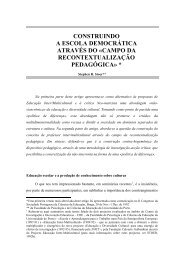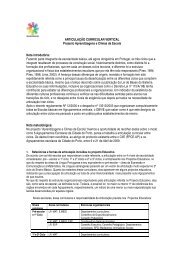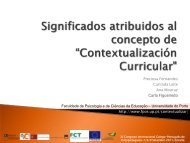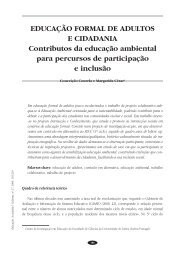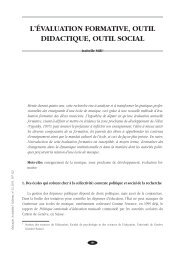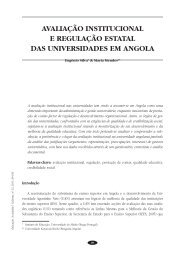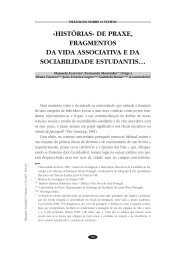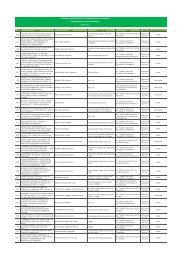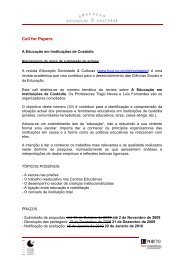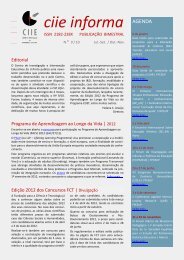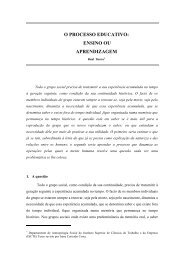REFLECTINGON AN ACADEMIC PRACTICE TOBOOST GENDER ...
REFLECTINGON AN ACADEMIC PRACTICE TOBOOST GENDER ...
REFLECTINGON AN ACADEMIC PRACTICE TOBOOST GENDER ...
You also want an ePaper? Increase the reach of your titles
YUMPU automatically turns print PDFs into web optimized ePapers that Google loves.
Our action research (AR) experience was not methodologically pure, however, accordingto Christianakis (2008), the complexity of classroom dynamics made unnecessary that educationalresearch conformed to the classic action research cycle; «teacher research reflects someof the same goals of action research, methodologically, [nonetheless] it is less formulaic thanthe action research cycle» (ibidem: 100). Following Smith (1996), that it is not really a misusingof AR; in fact, Lewin itself was more interested in offering skills to observe and problematizerealities then defining a strict method of research, and the technicization of AR maydegenerate and reduce its critical and liberating possibilities (Weaver-Hightower, 2010).We cannot forget, however, that in our experience we are going to start from a feministperspective that, by interacting with AR, brings a special focus on the consequences of powerrelations responsible for gender inequalities (Frisby, Maguire, & Reid, 2009). In that sense, «wemust be mindful that raising questions about gender inequalities can create hostilities fromthose resisting change, so we must carefully consider if and how such tensions can be negotiatedwithout endangering study participants» (ibidem: 16-17). Such question is extremely relevantin the classroom where is always present the power relation between teacher and students.In order to recognize that tension, we believe that we have to consider our experienceas not participative, despite of the active inclusion of students in it. In fact, students’ reflexivitywas centred on the topics we were analysing and not on the process and dynamic wewere acting while working on them. Indeed, even if we took in great consideration theiropinions and feedback in order to decide how to proceed, they did not take directly part inthe decision making; in other words, they were not co-researchers. That brought the teacher(B. Biglia), in the moment in which the practice was going to derive in an AR, to invite A.Velasco as external co-researcher, making it possible to redefine and articulate a more complexnetwork of power relations in the classroom. Moreover, A. Velasco’s participation wasextremely important in order to «respond to the ever-shifting, contextual and relational, andlanguage and culture-based nature of students’ identities and voices» (Cook-Sather, 2007: 397).According to the author, this can be achieved by the researcher engaging in a process oftranslation: «Translating ourselves into different versions of researchers such that we conceptualizeand collaborate with students as co-interpreters has the potential to help us resist someforms of imposition and subordination» (ibidem). We believe that researcher’s translation andshifts are inherently limited due to the fact that our standpoint (Haraway, 1991) cannot beomitted. Collaboration between researchers, especially if they have a different backgroundand standpoint, could improve our mobility and offer more space to students’ different opinionsand realities. In our case, the presence of the co-researcher was particularly relevant toreduce both an intergenerational lively gap and feminist language ones and help students tobe conscious of their gender stereotype.112



